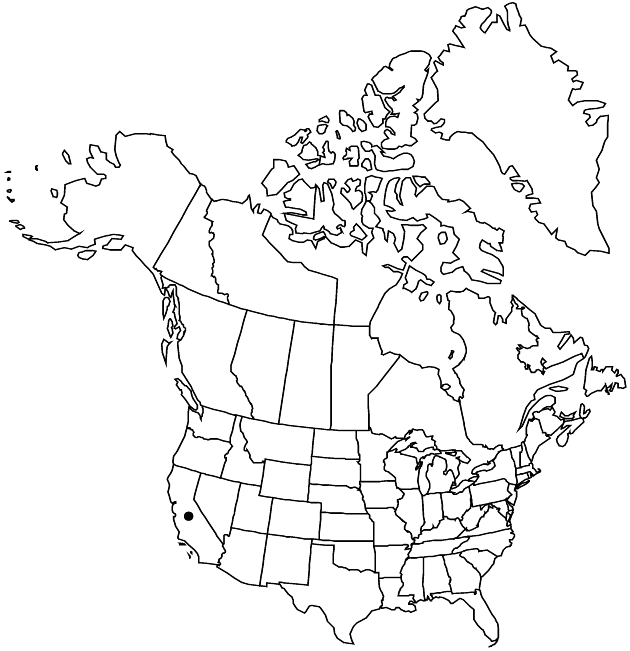familyAsteraceae
genusHelianthus
speciesHelianthus nuttallii
subspeciesHelianthus nuttallii subsp. parishii
Helianthus nuttallii subsp. parishii
Contr. Dudley Herb. 4: 316. 1955.
Common names: Parish’s or Los Angeles sunflower
EndemicConservation concern
Basionym: Helianthus parishii A. Gray Proc. Amer. Acad. Arts 19: 7. 1883
Plants usually 200–400 cm. Leaves mostly alternate; blades lanceolate, apices acute to acuminate, abaxial faces tomentulose to villous-tomentose. Phyllaries: abaxial faces densely hairy (longer hairs 1+ mm).
Phenology: Flowering late summer–fall.
Habitat: Marshes
Elevation: 10–500 m
Discussion
Of conservation concern.
The wetland habitat for subsp. parishii has nearly disappeared through draining of marshes and channelization of watercourses. The subspecies was thought to be extinct until, relatively recently, claims have been made that a population of it has been found.
Selected References
None.
Lower Taxa
None.
... more about "Helianthus nuttallii subsp. parishii"
introrse +
connate +
herbaceous +
acute;acuminate +
scarious +
absent +
yellow +
hirsute +
papillate +
continuous +
cuneate +
3-nerved +
lanceolate +
winged;ribbed;winged;ribbed +
1;15 +
stigmatic +
absent +
Parish’s or Los Angeles sunflower +
zygomorphic +
monomorphic +
dimorphic +
glabrate +
3mm;5mm +
staminate +
Calif. +
straight +
distinct +
proximal +
1;5 +
bisexual +
dispersed +
singly +
discoid +
indeterminate +
1;6 +
surrounding +
hemispheric +
alternate +
cauline +
yellow +
triangular +
lobed +
2-carpellate +
inferior +
attached +
anatropous +
3-toothed +
persistent +
falling +
absent +
coroniform +
tough +
thick +
absent +
connate +
persistent +
distinct +
falling +
unequal +
Contr. Dudley Herb. +
1955 +
neuter +
absent +
sterile +
paleate +
flat;slightly convex +
fibrous +
shorter +
exalbuminous +
modifed +
2;3 +
alternate +
branched +
erect +
continuous +
2-branched +
papillate +
Helianthus nuttallii subsp. parishii +
Helianthus nuttallii +
subspecies +
campanulate +
equaling +
shorter +
perennial +
